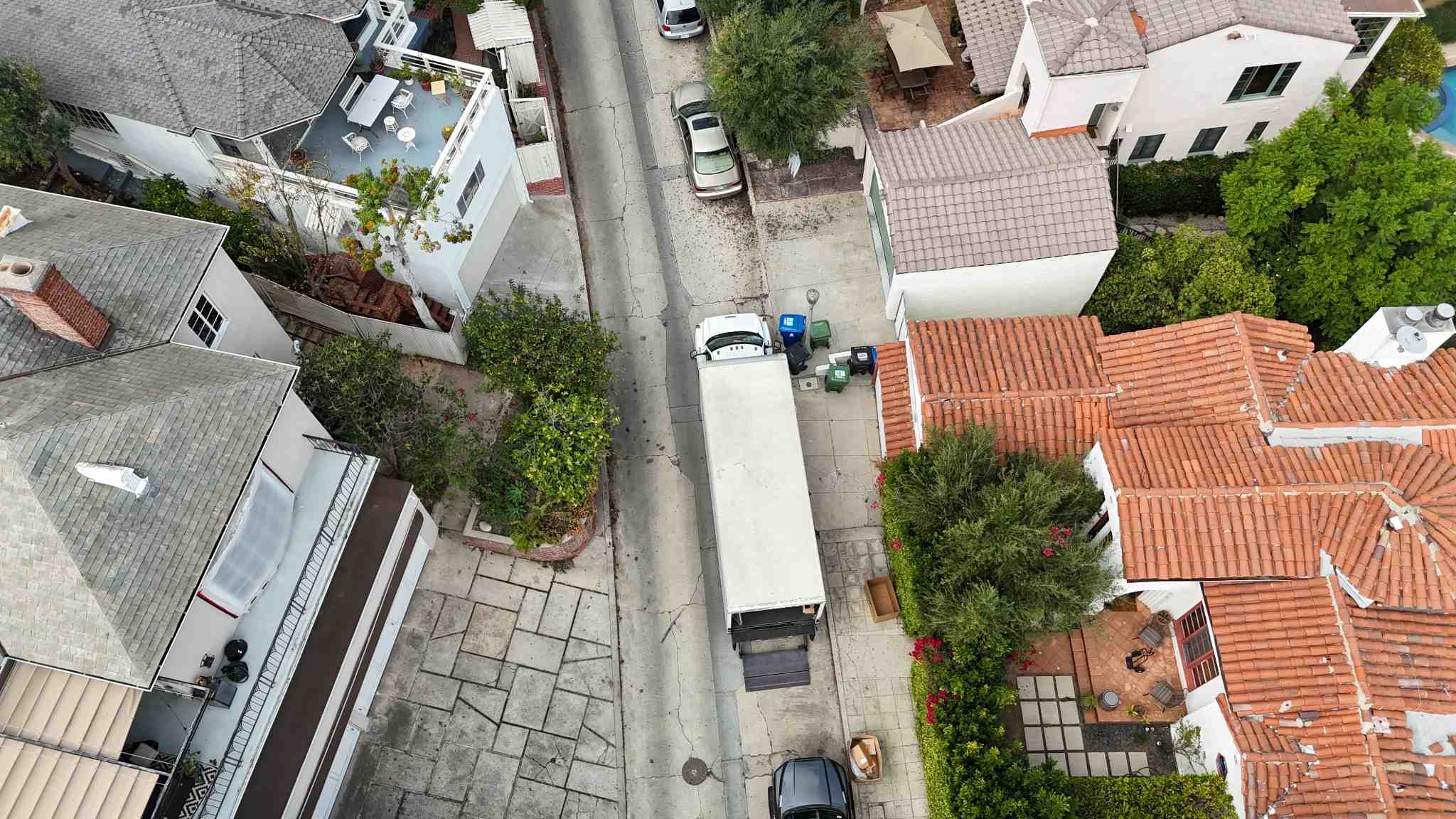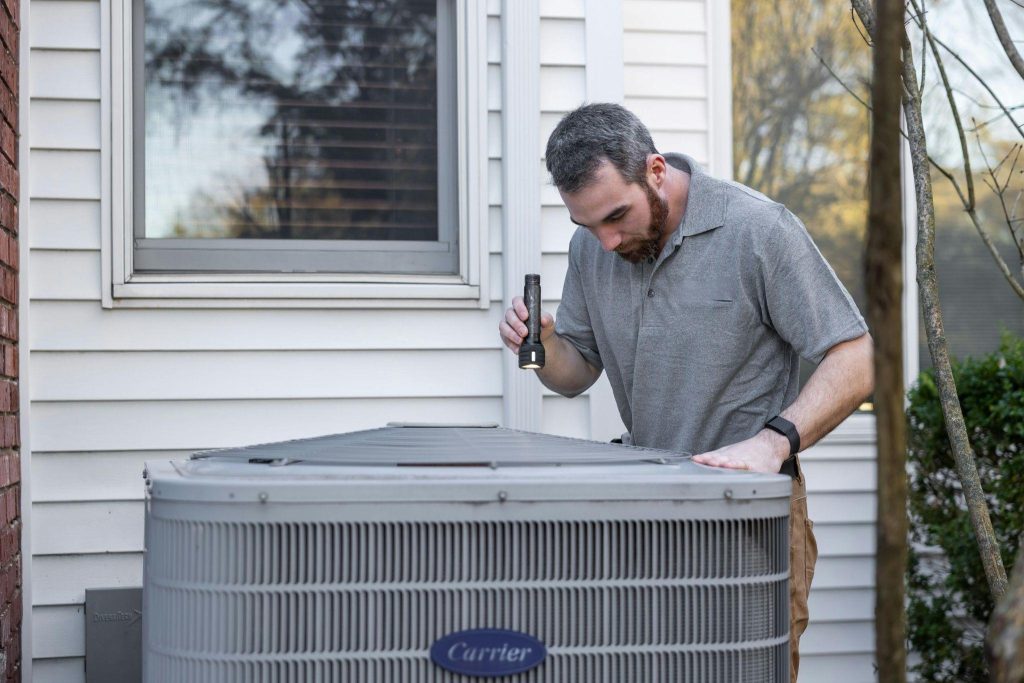Moving in a hillside neighborhood is very different from relocating on a standard flat street. The roads are narrower, the driveways are steeper, the parking is more limited, and the distances between home entrances and truck access can be significantly longer. As professional Sierra Madre movers who work in mountain-adjacent neighborhoods every week, we’ve learned exactly what makes hillside moves more complex — and how homeowners can prepare to make the process smooth, safe, and efficient.
When you’re moving to or from Sierra Madre, Altadena, Pasadena hills, Glendale’s Adams Hill, or the foothill communities surrounding Los Angeles, the same principles apply. Below is a comprehensive, highly practical guide based on real experience from movers who handle hillside relocations daily.
1. Start With a Visual Estimate — This Is Essential for Hillside Relocations
A visual estimate is the foundation of a smooth hillside move. Unlike standard relocations where access is predictable, homes in the hills can have unique conditions such as sloped driveways, winding paths, tight gates, extended staircases, and limited parking. Scheduling an in-person or video walkthrough allows the movers to understand exactly what equipment, truck size, and manpower will be required.
Movers can determine whether a full-size truck can safely reach the property or whether a shuttle truck is needed. They can evaluate the steepness of the driveway, estimate walking distances, and determine whether additional tools such as lowering straps, extra dollies, or long ramps will be necessary. Without this step, the price may be inaccurate and the crew may arrive unprepared, which can result in delays on moving day. A short walkthrough eliminates these risks entirely.
2. Choose a Licensed and Insured Moving Company With Proven Hillside Experience
Not all moving companies are equipped to handle hillside work. Hillside areas demand a combination of physical skill, caution, specialized equipment, and logistical planning. Before hiring a company, verify their license number, insurance coverage, and years of experience. Read through online reviews specifically mentioning hills, steep driveways, long walks, or difficult access.
Experienced hillside movers understand how to load the truck to maintain balance on a slope, how to safely transport furniture up or down long staircases, and how to plan the route so the truck can maneuver tight corners. They know what equipment to bring, how to prepare fragile items for long uphill walks, and how to avoid unnecessary risks. For a hillside move, hiring an experienced team is not just beneficial — it is absolutely essential for safety and efficiency.
3. Begin Packing Well in Advance and Label Every Box Clearly

Packing early is one of the simplest ways to save money on a move, especially in hillside locations where walking distances are longer. Movers move faster when boxes are sealed, labeled, and ready to load. Begin packing non-essential items at least a week before your move. Each box should be taped from top and bottom and labeled on multiple sides with the room name and contents.
Hillside moves often involve long paths, meaning boxes may be carried greater distances than usual. Overpacked boxes or unlabeled containers slow the process dramatically. The more organized your home is, the faster the movers will work. Additionally, decluttering is especially important for hillside relocations. If you have unwanted furniture or bulky items you no longer need, donate or dispose of them ahead of time to reduce the load.
4. Change Your Address and Notify All Essential Services Before Moving Day
Address changes can be time-consuming, so it’s best to complete them before the chaos of moving day. Update your address with USPS, your bank, insurance companies, and employer. Make sure your utilities — especially internet, electricity, gas, and water — are scheduled to transfer before you arrive at your new home. Hillside areas can sometimes have limited access, meaning technician appointments may take longer to schedule. Securing these services early prevents delays once you move in.
5. Secure a Parking Spot for the Moving Truck — One of the Most Important Steps in Hillside Moves

Parking is often the biggest challenge in hillside neighborhoods. Streets are narrow, curved, and frequently lined with cars. Some areas prohibit parking on one or both sides of the street, and certain roads may not accommodate trucks larger than 16 to 20 feet. This is where preparation becomes crucial.
Contact your moving company early and ask how to reserve a parking spot for a moving truck. In some hillside areas, the main truck parks at the bottom of the hill while a smaller vehicle transports items up and down. This process adds time but is sometimes the only safe option. If you’re unsure how to secure parking, your moving company should guide you.
It fits naturally here and benefits the reader.
6. Keep All Walkways, Pathways, and Access Points Clear for Movers
Hillside homes often have long, winding walkways, narrow steps, decorative stones, or gardens that can become obstacles on moving day. To help movers work efficiently, remove anything that blocks the path from the entrance to the truck access point. This includes potted plants, garden décor, outdoor furniture, hoses, tools, and debris.
Ensuring clear paths is also extremely important for safety. Steep or uneven surfaces require extra caution, and anything placed in the way can increase the risk of falls or damaged furniture. A quick cleanup the night before the move prevents unnecessary delays.
7. Prepare an Essentials Box and Move Valuables Yourself
Pack a designated essentials box with the items you will need immediately upon arrival — medications, toiletries, chargers, clothes, basic tools, and important documents. This prevents you from searching through boxes late at night after a long day.
For safety, keep valuables such as jewelry, passports, cash, and sentimental items with you. Hillside moves often involve more walking and additional handling, so keeping high-value items in your personal vehicle is the safest option.
It’s also important to keep pets away from the moving area. Dogs and cats can easily get startled, run into the crew’s path, or slip on steep outdoor steps. Plan ahead by placing them in a separate room, crate, or temporary sitter during the move.
8. Be Present During the Move to Coordinate and Guide the Crew

Your presence during the move is particularly valuable in hillside homes, where access points, parking restrictions, and walkway conditions may need real-time communication. Movers may need clarification on which furniture pieces are fragile, what should be disassembled, and where boxes should be placed in the new home.
Directing the movers at both pickup and delivery helps them avoid unnecessary back-and-forth walking and ensures that heavy items are positioned correctly the first time. Hillside moves require more coordination than standard relocations, and having the customer nearby significantly improves flow and efficiency.
9. Prepare for the Possibility of a Shuttle Truck if the Main Truck Cannot Access Your Street
Many hillside properties cannot accommodate a 26-foot truck due to sharp turns, steep inclines, or narrow streets. In these cases, the crew will use a small shuttle truck to transport your belongings between the main truck and your home. This is common in areas such as Sierra Madre hills, Altadena foothills, Glendale’s hillside communities, and Beverly Hills canyons.
A shuttle move takes longer and requires more labor, but it is often the only safe and practical solution. Discuss this possibility during your visual estimate so you can plan your schedule and budget accordingly. Experienced movers can quickly identify whether a shuttle will be required.
10. Protect Driveways, Floors, and Outdoor Surfaces
Many hillside homes feature premium materials such as natural stone, slate, marble tile, or custom woodwork on pathways, entrances, and driveways. These surfaces add beauty and value to the property, but they can also be scratched, chipped, or stained if they aren’t properly protected during a move.
If you’ve recently completed a luxury home renovation in California, it becomes even more crucial to protect your new finishes, as even a single mishandled dolly or furniture piece can cause costly repairs. Newly renovated floors, custom staircases, and freshly installed stonework require an extra layer of care to keep them in perfect condition.
Ask your movers to bring professional-grade protective materials, including:
- Floor runners and non-slip mats
- Masonite boards for high-traffic or sloped pathways
- Rubber-backed blankets for tile and stone surfaces
- Corner and railing protection for tight turns
Additionally, wrapping railings, door frames, and exterior corners with moving blankets helps prevent scuffs and dents when navigating large items along narrow or uneven hillside paths. The steeper the angle and the more delicate the materials, the more essential proper protection becomes to maintain the quality and integrity of your home.
11. Communicate Clearly With Your Movers Before and During the Move
Good communication helps the movers plan their route and avoid problems. Provide the crew with gate codes, door access instructions, specific parking instructions, and any neighborhood rules that may apply.
If cell service is weak in your area — a common issue in hillside communities — inform the movers ahead of time so they know to call before they arrive or can communicate while still in an area with reception. The more information the movers have, the smoother the day will be.
12. Take Photos of Furniture and Electronics Before Movers Disassemble Anything

If you have complex furniture, intricate shelving, or multi-piece bed frames, taking a few quick photos before the movers begin disassembly can save time later. This also applies to electronics, where cable positions can be confusing during reassembly.
Movers typically bundle hardware in clear bags and tape them to the furniture, but photos add an extra layer of organization and prevent mistakes. For hillside moves, where time and energy are often stretched due to long paths and steep access, having these details documented makes the entire process easier.
13. Prepare the New Home Before Movers Arrive
If your new home is also in a hillside neighborhood, prepare it just as thoroughly as the original location. Make sure the property is accessible, pathways are clear, and utilities are active. Measure doorways and staircases to confirm that large pieces will fit. Identify exactly where beds, sofas, and appliances will go, because rearranging heavy items on a slope or in tight entryways can be challenging.
A well-prepared destination reduces the unload time dramatically and prevents multiple trips up and down steep paths.
Moving to a high-rise property? Learn how moving companies in Downtown Los Angeles expertly handle high-rise relocations.
14. Expect the Move to Take Longer Than a Standard Relocation

Hillside moves typically take more time than flat-street moves, even if the home is small. The crew may need to:
- Walk longer distances
- Carry items at a slower pace for safety
- Navigate uneven or narrow paths
- Use additional equipment
- Work around parking limitations
- Use a shuttle truck
This is normal and should be factored into your expectations. The key to a smooth hillside move is patience and preparation.
15. Consider Moving on a Weekday for Easier Parking and Less Traffic
Weekends are busier in hillside communities. More cars are parked on the street, neighbors host gatherings, and routes can be congested. A weekday move usually provides clearer roads and easier truck access, which reduces time and stress. If your schedule allows, weekday moves are strongly recommended in hillside neighborhoods.
16. Do a Final Walkthrough Before the Movers Leave
Before the truck departs, walk through every part of the home — including balconies, storage areas, garages, and side yards — to confirm that nothing was left behind. Hillside homes often have multiple levels, hidden storage, and outdoor nooks where items can easily be overlooked.
A few minutes of checking can save you from realizing later that something important was left behind.
Final Thoughts
Moving in a hillside area requires extra planning, professional experience, and a strong attention to detail. By following these tips and communicating clearly with your movers, you can ensure a smooth transition into or out of your hillside home.




















